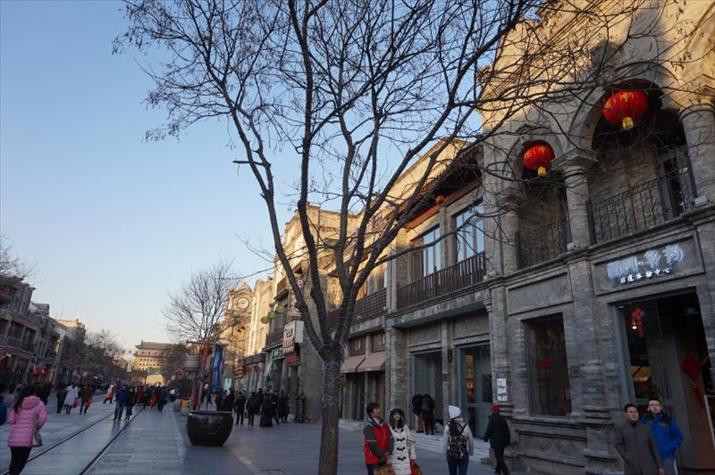|
||||||||||
| Home Nation World Business Opinion Lifestyle ChinAfrica Multimedia Columnists Documents Special Reports |
|
||||||||||
| Home Nation World Business Opinion Lifestyle ChinAfrica Multimedia Columnists Documents Special Reports |
| Lifestyle |
| Intangible Heritage Lives |
| Experienced crafters share their technology in an innovative mission to protect China's intangible culture heritage |
| By Ge Lijun and François Dubé ·2017-03-20 |

On Beijing's Qianmen Avenue, hidden between two alleyways a few steps from Tiananmen Square is the small workshop of Yao Huifen. From the outside, you would have a hard time believing that this new and modern-looking shop contains a world of millennial treasures.
Yao is a master of the traditional craftsmanship of Suzhou embroidery, which is listed as an intangible cultural heritage of China. Originally from Suzhou City in east China's Jiangsu Province, this art form - famous for its refined designs and elegant colors - was struggling to find its relevance in modern society. But since her personal workshop opened a year ago, Yao is increasingly optimistic about the future of Suzhou embroidery.
Aside from an increase in sales and a proportionate raise in her income, the most important change to Yao, 49, is that her craft now benefits from an important platform in the very heart of the capital.
"More and more young university students want to learn Suzhou embroidery; they visit my workshop to learn its history and then ask us to teach them the techniques. There is a demand for long-term embroidery training courses, and we are working toward that," she told ChinAfrica.
Passing on to a younger generation her passion for the beauty, the elegance and the refinement of the ancient art of Suzhou embroidery has become the life mission of this craft master.
Making the intangible tangible
Yao's Suzhou embroidery workshop is the result of a successful partnership between Beijing Government and Yongxin Huayun Culture Industry Group, which is aimed at turning Beijing's historic Qianmen Avenue into a district dedicated to the dissemination and safeguarding of China's intangible cultural heritage.
Yao's booth workshop is the first of 16 craft workshops planned to open in the coming months. These workshops form a separate part of a larger network covering 200,000 square meters across the Qianmen area, with the Intangible Cultural Heritage Experience Center, which opened its doors to the public in December 2016, at its core.
Once the $3.8-billion project is completed, 1,000 specific art forms from 12 major kinds of craftsmanship will be available to the public, showcasing the excellent skills of more than 1,000 Chinese masters from all over the country.
This project is fully in line with the Convention for the Safeguarding of the Intangible Cultural Heritage, adopted in 2003 by United Nations Educational, Scientific and Cultural Organization (UNESCO), which aims to protect the "practices, representations, expressions, knowledge and know-how that communities recognize as part of their cultural heritage."
Keeping craft alive
On the two floors of the 2,000-square-meter Intangible Cultural Heritage Experience Center, more than 200 forms of craftsmanship are already showcased, ranging from pottery to calligraphy, as well as embroidery, sculpture, painting, copper and metal handicrafts. Each art form has its own dedicated area, where visitors can understand, examine and purchase artworks produced by the masters and their apprentices.
Far from limiting itself to merely showcasing or selling the creations, the experience center goes one step further and allows visitors to physically experience China's rich heritage. Experience stations have been set up and visitors are encouraged to indulge in their creativity to the fullest by creating their own artworks.
With the help of specially trained staff, visitors can try their hands at pottery, painting, or paper-cut, among others. With their creative urges satiated, the budding craft masters can purchase their own little piece of art for a modest fee.
"It is by physically and emotionally experiencing the various crafts that visitors come to really appreciate the art forms," Ye Jing, Brand Manager at Yongxin Huayun, told ChinAfrica.
Masters and craftsmen also visit the experience center, where they enjoy meeting visitors and sharing their passion for their art. These contacts and exchanges with the masters put a human face on the intangible cultural heritage, and often leave the strongest impression on visitors of all ages.
"Looking at the assiduous eyes and skillful hands of the masters at work, I was touched by their artistic charm and felt very proud of our traditional art. The masters also introduced some of the core techniques and explained their cultural significance. All of this makes me want to be creative myself," said Wang Ning, a 20-year-old student from Peking University.
In this spirit, the project complies with UNESCO's best practices to safeguard intangible cultural heritage, which recommend not to "freeze" the heritage, but rather to make it "relevant" and "constantly recreated."
| 2Next |
| About Us | Contact Us | Advertise with Us | Subscribe |
| Copyright Beijing Review All rights reserved 京ICP备08005356号-5 京公网安备110102005860号 |